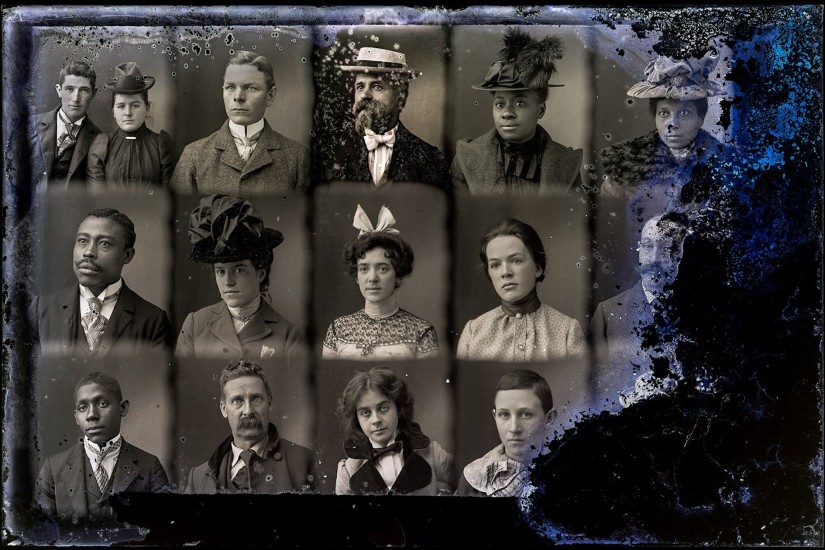The sitters who moved in and out of Hugh Mangum’s view between 1897 and 1922 smiled, laughed, and daydreamed; they threw their arms around or leaned upon one another; they wore their best dresses and fanciest hats, or they wore coarse cloth and stood barefoot. In an era of racial terror, as Jim Crow tightened its grip on the South, Mangum set up makeshift studios across North Carolina and Virginia (sometimes just a tent outside of town) that were open to white and black sitters alike. A gangly white man with an appealingly unkempt mustache, Mangum often used a Penny Picture camera, designed to capture up to thirty exposures on a single glass plate. Sitters would line up and take their places in front of the camera; Mangum would charm and cajole them, shifting the plate a little bit for each new exposure. The result, inadvertent but still provocative, is a record of how much daily life and experience was shared by the people whom racist American custom and law treated as separate.
“Inadvertent” is also a good word to describe our ability to see Mangum’s portraits at all. After he died in 1922, after complications from the flu, at the age of forty-four, the negatives he had stored in a barn on his family farm, in Durham, North Carolina, went mostly uncared for. His siblings turned the barn into a henhouse and toolshed, and the negatives were buried under junk and chicken shit. They were rescued once, in the nineteen-seventies, only to be relegated to the back-yard greenhouse of Mangum’s nephew; they were rescued again, in the nineteen-eighties, when they were donated to Duke University. As recently as 2013, more boxes of negatives turned up, this time from the bowels of special collections and marked “discard.” The negatives have passed through the hands of family members, neighborhood activists, local photographers, librarians, archivists, and scholars. Now many of the portraits can be seen in person at Duke’s Nasher Museum of Art, in an exhibition running through May; in an accompanying catalogue, “Where We Find Ourselves”; and in another recent book on the photographer, “Photos Day or Night.”
